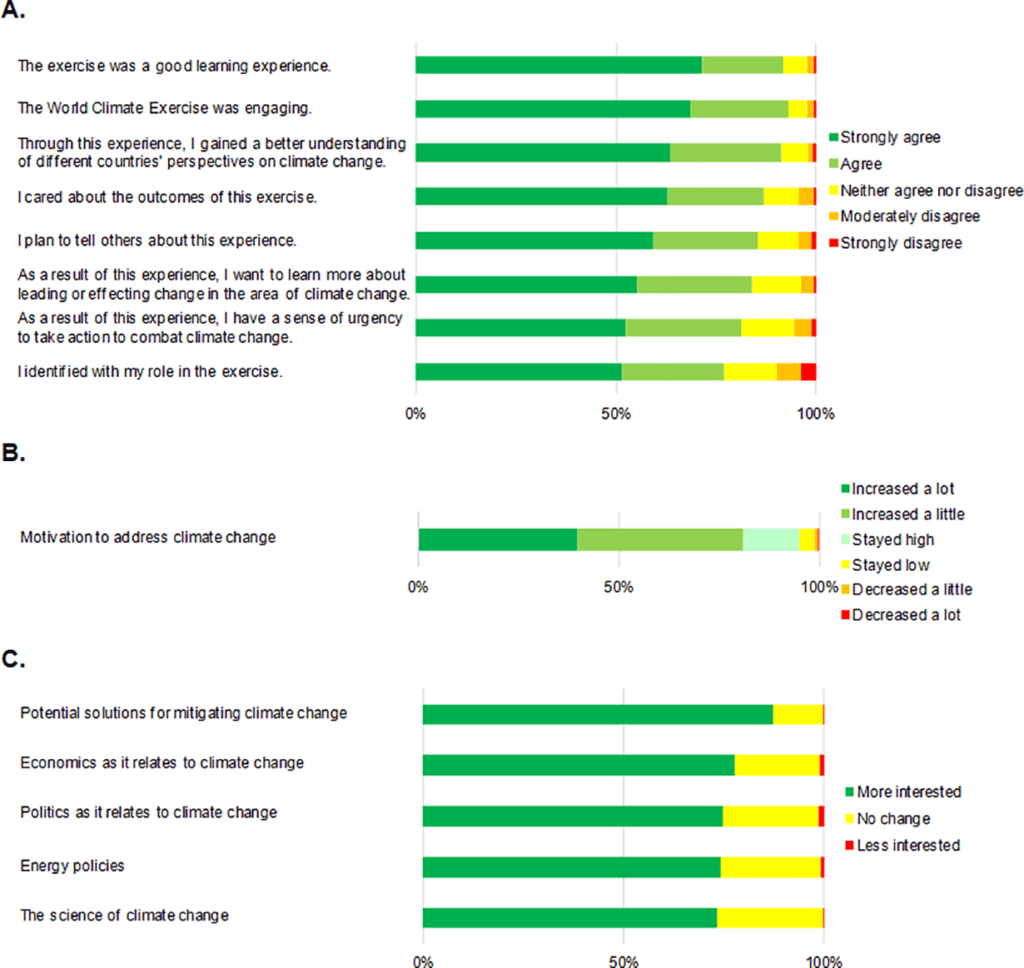Climate change is no joke — but it can be a game.
More specifically, it can be the subject of an MIT Sloan role-playing video game. Dubbed World Climate Simulation, the game puts players in the shoes of UN members partaking in climate talks. Its developers report that over four-fifths of participants who played the game showed an increased desire to combat climate change, regardless of their political beliefs.
Climate UN-change
“The big question for climate change communication is: how can we build the knowledge and emotions that drive informed action without real-life experience which, in the case of climate change, will only come too late?”, asks Prof. Juliette Rooney Varga, lead researcher of the study and Director of the University of Massachusetts Lowell Climate Change Initiative.
The team’s approach revolved around three elements: “information grounded in solid science, an experience that helps people feel for themselves on their own terms and social interaction arising from conversation with their peers,” explains co-author Andrew Jones of Climate Interactive.
In the game, developed countries pledge money through the Green Climate Fund to help developing nations cut emissions and adapt to climate change. The game’s core mechanics are handled by a real-life climate policy computer model known as C-ROADS. This model has been used to guide UN climate negotiations in the past, as it is a very powerful simulator of expected outcomes. Players’ choices were run through C-ROADS and resulted in immediate feedback on how each would ultimately affect the environment.
The group worked with 2,000 participants of various socioeconomic backgrounds and ages recruited from “eight different countries across four continents”, explains an MIT Sloan press release. Through the game, the team looked at each player’s beliefs regarding climate change, their emotional responses to its effects, and willingness to address the main drivers of climate change. By the conclusion of play trials, participants showed greater urgency in tackling the issue, the team reports.

Post-survey responses to questions regarding (A) how engaging the World Climate simulation was as a learning experience, (B) the effects the simulation had on motivation to address climate change and (C) desire to learn more about climate change science, solutions, politics, economics, and policies.
Image credits J.N. Rooney-Varga et al., 2018, PLOS One.
The idea behind the game was to try and bridge the huge divides that the political spectrum imparts on the discussion, the team explains. By putting people in charge of tackling the issue and letting them see how their lives will be impacted, the game aims to engage those that aren’t very concerned about climate action.
Hands-on experience
The team reports that players go headlong into the first round of climate negotiations, usually being quite lax in the changes they call for. However, after C-ROADS showed the outcome of these talks to their health, prosperity, and welfare, the team adds, they generally went into the following rounds with a much more aggressive approach to achieving emissions cuts.
“The first round of negotiations ends with a plenary session in which a representative from each delegation delivers a short speech describing their pledge and negotiating position, including concessions they seek from the other parties,” the paper explains.
“In our experience, the first round of pledges always falls short of the emissions reductions required to limit expected warming to 2 °C and are often qualitatively similar to the actual pledges that emerged from the Paris Agreement, leading to warming of approximately 3.3 °C by 2100.”
“Participants often express surprise that the impact of their pledges is not greater and ask many questions about the structure and dynamics of the climate system as they seek to understand why the simulation results differ from their expectations.”
Perhaps more importantly, they were also more hopeful in the eventual success of environmental actions, as well as a greater desire to understand climate science and the impact of climate change. Urgency is key to actually undergoing the societal, economic, and political changes required to combat climate change. The other two traits will help keep our eyes on the goal during difficult times and limit the effect of mumbo-jumbo à la ‘clean coal‘.
“It was this increased sense of urgency, not knowledge, that was key to sparking motivation to act,” said Prof. Juliette Rooney Varga, lead researcher of the study and Director of the University of Massachusetts Lowell Climate Change Initiative.
In the end, the team hopes to push environmental talks to the forefront of national and international dialogue and policy-making and to take political interest out of climate action.
“Gains were just as strong among American participants who oppose government regulation of free markets – a political ideology that has been linked to climate change denial in the US – suggesting the simulation’s potential to reach across political divides,” the paper reads.
“Research shows that showing people research doesn’t work,” said John Sterman, co-author of the study and professor at MIT’s Sloan School of Management. “World Climate works because it enables people to express their own views, explore their own proposals and thus learn for themselves what the likely impacts will be.”
Schools in France, Germany, and South Korea have adopted World Climate Simulation as an official educational resource, the team adds.
The paper “Combining role-play with interactive simulation to motivate informed climate action: Evidence from the World Climate simulation” has been published in the journal PLOS One.










